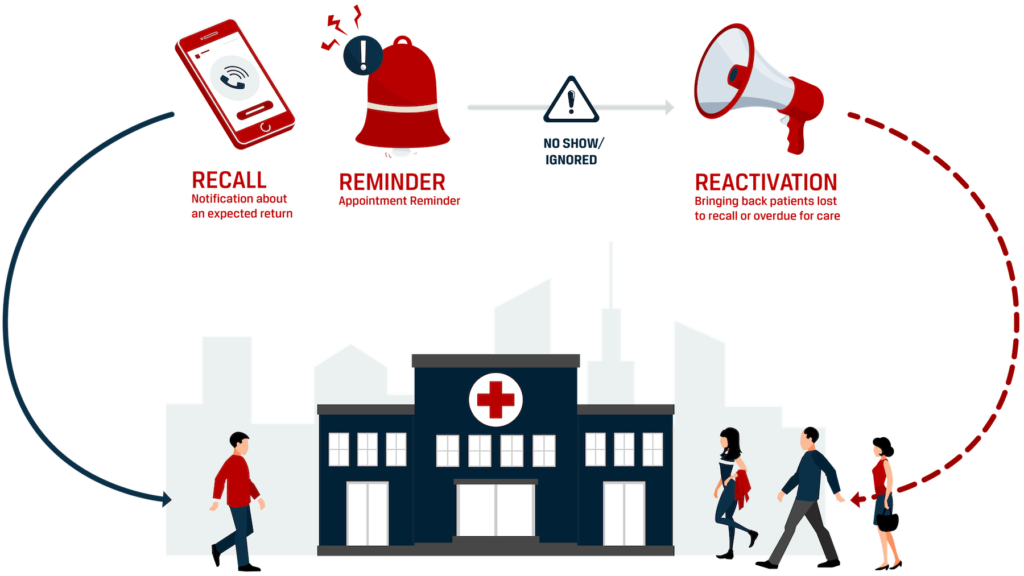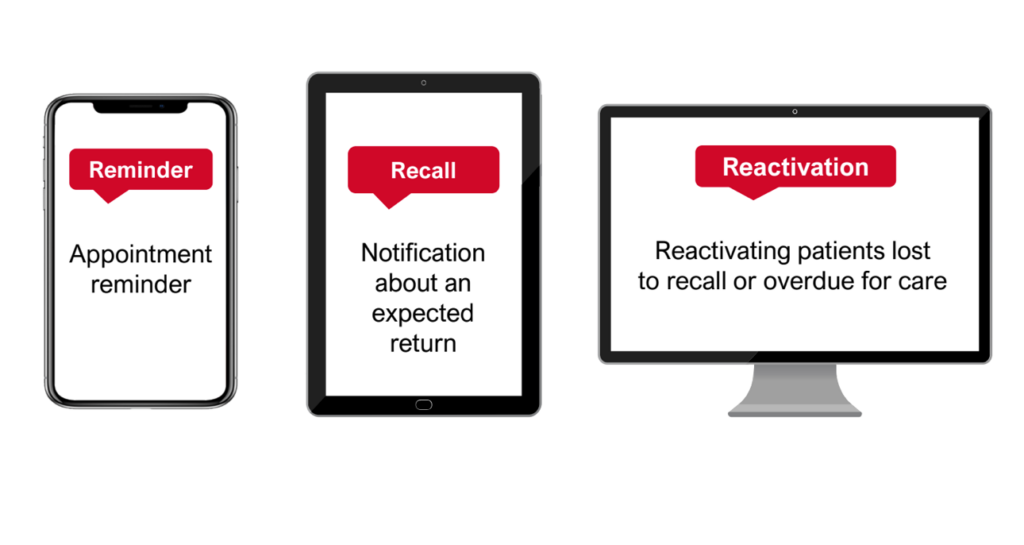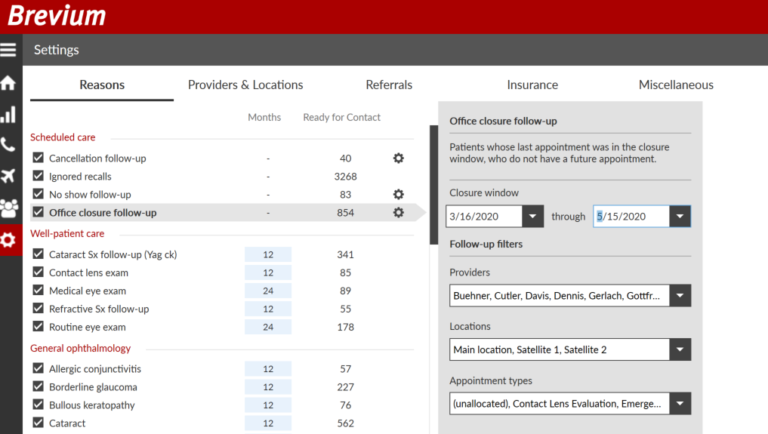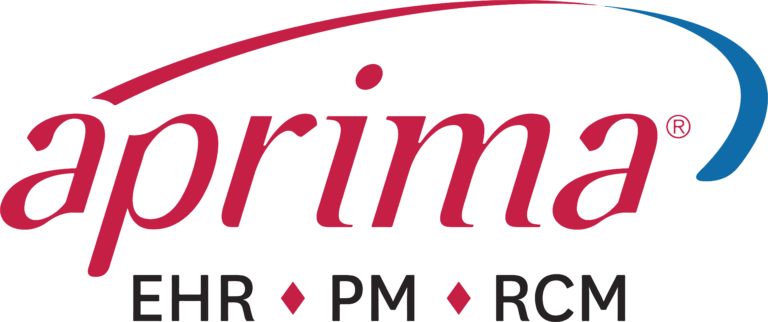The Brevium Blog

The Role of Patient Reactivation in Revenue Cycle Management (RCM)
The long-term financial health of every healthcare organization relies on the effectiveness of their revenue cycle management (RCM) system. In today’s evolving healthcare space, the delicate balance of driving revenue growth and enhancing patient care has never been so crucial, with the efficiency of your RCM very well being what makes or breaks your business. For practices looking to establish a foundation for future growth and sustainability, the importance of efficient RCM cannot be overstated, as this process significantly impacts your practice’s ability to generate revenue, optimize workflows and improve patient care. Part of an efficient RCM system involves patient reactivation—a process that helps practices identify and bring back patients who have fallen behind on care. When your patients no-show, cancel or fail to follow through with recommended treatment, they disrupt the patient revenue cycle and prevent you from providing timely and essential care. In this blog, we’ll discuss the key components of sustainable RCM, the concept of patient reactivation and how implementing effective reactivation strategies fuels long-term RCM success.
Understanding Revenue Cycle Management
While enhancing patient health outcomes is the highest priority for healthcare providers, establishing financial stability is equally important; after all, this stability is how practices stay in the business of treating their patients. Revenue cycle management (RCM) refers to the financial process used by medical practices to efficiently track and manage all revenue-generation functions in their organization, encompassing the entire patient revenue cycle from when a patient first books their appointment to when the final bill is paid. Implementing sustainable RCM can be a complex process that requires extensive data collection and analysis, frequent patient communication, and consistent monitoring. But when done correctly, RCM helps practices efficiently manage the patient revenue cycle, allowing practices to optimize financial performance, ensure practice efficiency and improve the patient experience. The success of your RCM system starts with building a strong foundation. Here are the key components to a sustainable RCM process:
- Software Integration: Implementing digital tools and solutions to streamline workflows and increase efficiency. These tools include electronic health records (EHRs), patient engagement software, integrated billing systems, and more.
- Data Analysis: Using your evolving healthcare data to inform decision-making and optimize RCM performance.
- Staff Training: Empower your team by providing the necessary training and support to be successful. This training should include continuous education as new information, trends and strategies arise.
- Compliance: Following HIPAA regulations and guidelines to minimize risk and ensure sustainable RCM. Compliance includes regular audits of your system, updated staff training, and staying updated on regulatory changes.
- Patient-First Approach: Elevating the patient experience and boosting patient satisfaction through simplified billing processes, improved patient communication and continuous improvement.

The Concept of Patient Reactivation
Healthcare professionals are no strangers to losing patients, with even the most successful practices allowing patients to slip through the cracks or be forgotten. Most practices have thousands of lost or overdue patients absent from treatment with no pending appointment or recall in place to bring them back; in fact, Brevium estimates that practices have 1,000 to 2,000 lost to follow-up patients per provider. Acting as the “safety net” for when recall efforts fail, patient reactivation identifies these overdue patients and employs strategic outreach to win them back. With around 25 percent of patients lost or overdue from their practice, customer reactivation represents a huge area of opportunity for practices looking to increase appointment volume, improve RCM and organically grow their business.
What defines a lost to follow-up patients?
Lost to follow-up patients have two qualities, depending on your practice’s specialty: 1) they have been absent from your practice past the recommended return date for their diagnosis or condition and 2) they have no pending appointment or recall scheduled to return for treatment.

The Financial Benefits of Patient Reactivation
Patient reactivation is mutually beneficial for patients and practices alike. For your lost to follow-up patients, reactivation is the means to receiving essential treatment and preventative care that enhances their health outcomes and re-engages them to become active participants in their own healthcare. For practices, reactivating lost to follow-up patients not only fosters loyalty and satisfaction, but is the key to fueling organic practice growth and boosting revenue.
Reduced Patient Acquisition Costs
Studies show that acquiring new patients costs anywhere from five to 25 times more than retaining or reactivating an existing one. These results aren’t too surprising; after all, practices have a 20 to 40 percent chance of reactivating a former customer compared to a five to 20 percent chance of turning a new patient into a loyal customer. Your former patients have experienced your services and know how you operate, making patient reactivation one of the best strategies for increasing appointment volume and driving revenue growth.
Increased Revenue Opportunities
Brevium estimates that 25 percent of patients are lost or overdue from medical practices, yet many organizations don’t prioritize patient reactivation because they aren’t aware or convinced of its value. In 2019, Brevium conducted a study that analyzed the effectiveness of customer reactivation strategies with lost, overdue, high-risk, and absentee patients. Within the constraints of the study, Brevium found that reactivated patients brought in on average $174 in revenue on their first return appointment and an additional $284 in the 12 months following this initial appointment—resulting in around $458 in additional revenue per reactivated patient in a year’s time. These statistics also indicate that most patients don’t book just one appointment but keep returning for subsequent visits and procedures important to treating their conditions. Considering most practices have 1,000 to 2,000 lost to follow-up patients per provider, patient reactivation is a goldmine for practices looking to increase appointment volume and maximize revenue potential.
Boosted ROI & Bottom Line
Because customer reactivation requires less time, money and effort from your practice than marketing to new patients, you experience a higher return on investment (ROI) and increased revenue potential. Practices also experience greater returns when they use patient reactivation to fill empty appointment slots with high-value and high-priority patients—mainly those with threatening conditions and patients who may need subsequent visits and procedures to address their problems.
Strategies for Successful Patient Reactivation
Effective patient reactivation is often easier said than done, especially if your practice doesn’t implement the best strategies for success. Here are four key strategies for re-engaging your lost to follow-up patients, increasing appointment volume and ultimately, boosting your organization’s bottom line:
Patient Segmentation
Patient segmentation is essential for shaping your customer reactivation campaign to meet practice goals. Practices too often attempt to reactivate patients randomly and all at once rather than segmenting them into manageable groups that allow for tailored, personalized care. This strategy not only overwhelms your staff and increases the odds they won’t be able to follow through with the campaign, but also prevents your practice from maximizing reactivation potential that comes from using lost to follow-up patients to meet practice needs and goals. Implementing an effective segmentation strategy will ultimately help your practice prioritize its highest-priority patients and fuel organizational growth. Here are three common examples of how Brevium customers use segmentation to optimize their reactivation efforts:
- Using ICD-10 and CPT codes to target patients with high-value diagnoses that would need subsequent and continuous treatment, including those who would be candidates for surgical procedures.
- Targeting lost to follow-up patients to fill a specific provider or location’s schedule, especially if the doctor or location is new.
- Prioritizing patients with high-risk conditions (i.e. cancer patients).
Effective Communication Strategies
Patient reactivation campaigns are made successful through effective patient outreach; after all, a healthcare organization’s communication strategy is the means through which they can restart the conversation with their lost to follow-up patients and encourage them to return for care. There are several ways practices can effectively re-engage their patients, with Brevium finding that the following three methods yield the highest success rates and greatest returns:
Live Staff Calls
Though most practices turn to automated outreach methods to keep up with the demand of running a healthcare business, Brevium finds that live staff calls are the single most effective method for reaching your lost to follow-up patients and bringing them back for treatment. Because of this method’s high reachability—with most lost to follow-up patients having a reachable phone number compared to other channels—staff calls have the highest patient conversion rate at an average of 12.5 percent and maintains effectiveness through subsequent contacts.
Automated Outreach
Automation plays a significant role in helping medical practices run smoothly and efficiently—today’s evolving healthcare industry wouldn’t thrive without it. Despite staff calls being the most effective outreach method, staff calls alone do not make for an effective communication strategy, mainly because most practices don’t have the time nor manpower to sufficiently contact and follow-up with overdue patients. Automated outreach is essential for your patient reactivation campaign, as this strategy allows your practice to send timely, relevant and personalized communication on a greater scale without hindering your staff.
Multi-Channel Communication
Many healthcare practices only use texts and emails to communicate with their patients, yet Brevium found in its ALOHA study that these were the two least successful outreach methods due to some patients not having text-friendly phone numbers or reachable emails; in fact, Brevium reports that up to 30 percent of overdue patients remain uncontacted with text and email as the only outreach methods. However, using texts and emails in tandem with methods that have higher reachability—think staff calls, autocalls and direct mail—will help practices reach over 95 percent of their overdue patients.
Leveraging Technology
Modern technological advancements of recent decades are the driving force behind the healthcare industry’s rapid growth, permanently changing the way medical practices engage with patients and operate their businesses. These breakthroughs not only significantly impact the clinical side of healthcare, but also help practices streamline tedious administrative tasks and optimize practice efficiency—ultimately, allowing them to focus more time and effort on delivering the highest quality care. Most practices already use software solutions in some capacity to assist various office functions, such as storing patient records, implementing automated appointment reminders or sending patient recall notices. Like these digital tools, patient reactivation technology uses automation and reporting features to identify, contact and follow-up with your lost to follow-up patients more efficiently than any manual process could.
There is a wide range of tools and digital solutions on the market to choose from, but remember that not all software is created equal, and each system has features that may better suit your needs than others. Take Brevium for example. With over 18 years of refinement, Brevium’s unique software offers comprehensive solutions that streamline and optimize every step of the reactivation process. Here are four unique features that set Brevium apart from competitors:
- Patented Data Mining Tools: Most patient reactivation software will find your lost to follow-up patients using basic patient demographics and last treatment date. While this method still finds lost to follow-up patients, practices are limited in their ability to reactivate specific patients to fulfill practice needs and goals. However, Brevium takes data mining a step farther by using unique patient identifiers to find your inactive patients, including treatment history, billing history, insurance carrier, provider, location, and much more. Further, Brevium has the patented ability to mine your practice management system using ICD-10 and CPT codes, allowing practices to identify and target their highest priority patients.
- Automated Outreach & Live Caller Program: Brevium’s software is highly customizable, with each practice able to employ the contact methods that work best for their situation. With options for automated and staff outreach through various communication channels, Brevium ensures the highest reachability with your patients. Unlike most software that only use texts and emails to contact patients, Brevium offers a live staff caller program, autocalls, texts/SMS messaging, emails, letters, and postcards to ensure that through one channel or another, your patients will be reached.
- Brevium Stitch: Switching practice management systems is one of the biggest reasons that practices lose essential patient data and often, the patients themselves. Moving patient data from one system to another often requires loads of time, effort, expertise, and money just to recover incomplete data. However, the Brevium Stitch is a unique tool that merges your old system with the new to create one seamless file of patient history needed for effective patient reactivation. Rather than just patient name and demographics, Brevium also recovers your patients’ disease profiles, treatment/procedure history, billing history, and much more. The Stitch is also helpful for backing organizational growth, especially for organizations that merge with practices on different practice management systems.
- Advanced Reporting Tools: The financial health of your practice hinges on having the right data, yet many practices opt to manually track results or attempt to run reports in their practice management system—both of which can be difficult, tedious and time-consuming. With Brevium, practices have access to detailed, accurate reporting that offers instant insight into the success of their customer reactivation campaigns. Brevium presents data on ROI, revenue generated, appointments scheduled and more right on its Dashboard, with other more detailed reports easily accessible in the Reports tab. Also unique to Brevium, practices have access to The Busyness Report—a report that helps practices optimize scheduling without overwhelming providers and staff. This report analyzes weekly appointment volume by provider, new patient ratio, no-show rates, average time between scheduling and appointment, overbooking statistics, and appointments per hour to help practices better understand their providers and maximize profitability.
Measure Your Success with Data Analytics
Patient reactivation isn’t a one-and-done task, but a continuous process that requires consistent monitoring and adjusting. By tracking key metrics and analyzing the data generated from their efforts, practices gain invaluable insight that empowers informed decision-making and generates greater returns.
To effectively measure your success, you’ll need to closely monitor these seven metrics:
- Contacts sent to inactive patients
- Reasons for the contact (i.e. no-showed, cancelled, specific diagnosis)
- Communication channels used for contact
- Appointment conversion rate
- Patient conversion rate
- Revenue generated from lost to follow-up patients
- Return on investment (ROI)
Patient Reactivation’s Role in Long-Term RCM Success
As we’ve discussed, the revenue cycle in healthcare encompasses the entire patient lifecycle from a patient’s initial contact with the practice to final payment of services. Effective RCM healthcare services are essential for your medical organization, as this process oversees the clinical, administrative and financial functions of your business. However, patients disrupt the revenue cycle when they fail to return for recommended treatment and therefore, significantly affect your organization’s ability to deliver high-quality care and generate revenue. Rather than leaving these valuable patients behind, an effective customer reactivation strategy will re-engage these patients to become active participants in their own healthcare—turning them back into loyal, repeat customers. Here are three reasons to prioritize customer reactivation as part of your RCM strategy:
- Patient reactivation contributes to a consistent cash-flow. As mentioned earlier, Brevium found that inactive patients bring in an average of $174 for their first return visit and an additional $284 revenue over a 12-month period. If most practices have thousands of overdue patients in their database and these customers generate an average of $458 in revenue in a year, practices can effectively use patient reactivation to access a new revenue stream and increase their organization’s profitability.
- Patient reactivation fosters loyalty and satisfaction, positively impacting the patient revenue cycle. Re-engaging your lost to follow-up patients invites them to once again become active participants in their own healthcare journeys. Customer reactivation shows your patients that you care about their health and are willing to put in the effort to bring them back, fostering a sense of loyalty that turns them into repeat customers. In its ALOHA study, Brevium found that most reactivated patients return for subsequent visits after their initial appointment—meaning that practices who don’t prioritize patient reactivation and retention stand to lose the business and revenue of thousands of customers.
- Patient reactivation boosts practice growth by increasing overall appointment volume and helping providers maintain a full schedule. Through this process, practices can optimize practice performance and scheduling efficiency—all while increasing patient compliance by ensuring their inactive patients don’t remain missing from essential care.
Patient reactivation plays a critical role in a robust revenue cycle management strategy. Not only does effective customer reactivation help your practice identify and re-engage overdue patients in need of essential care, but it also fuels the patient revenue cycle and contributes to the overall financial health and operational efficiency of your practice. When practices prioritize patient reactivation and implement the best strategies for success, they positively impact their organization’s ability to improve the RCM process and ultimately, deliver exceptional care. To unlock the full value of customer reactivation and the impact it has on the RCM process, practices should invest in a patient reactivation software like Brevium—a patented tool that employs data-backed strategies designed to help practices improve patient care, drive engagement, fill provider schedules with high-priority patients, and access the untapped revenue latent in overdue patients. With Brevium, you’re not working toward growth in the dark, but rather using unique reactivation solutions to enhance the RCM process and allow for continuous improvement and future growth.
Are you ready to realize unprecedented returns? Schedule a free demo with Brevium today to learn how our patient reactivation technology can boost your bottom line.
Description: Discover how patient reactivation can transform your healthcare practice’s revenue cycle management (RCM) and boost long-term financial success.














